The year school kids got a taste of local
Burgers, oatmeal and ‘boatloads of apples.’ Farmers reflect on their first year growing for the behemoth buyer that is the public school system.

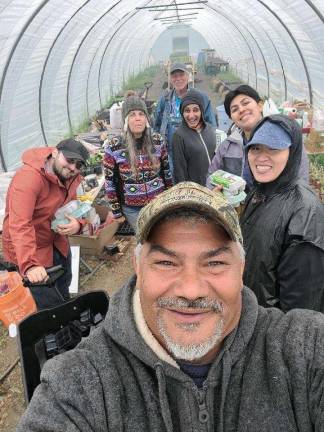

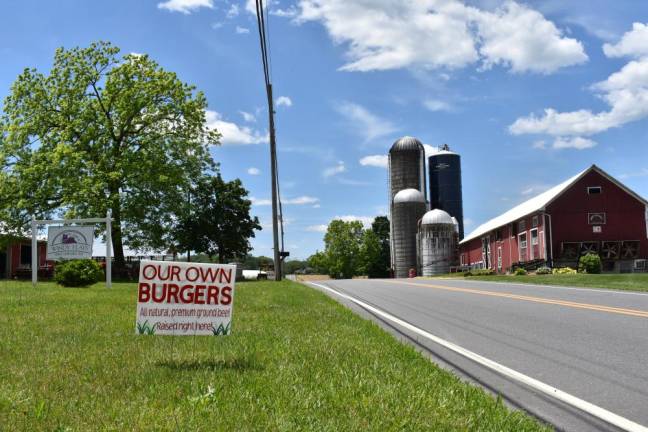
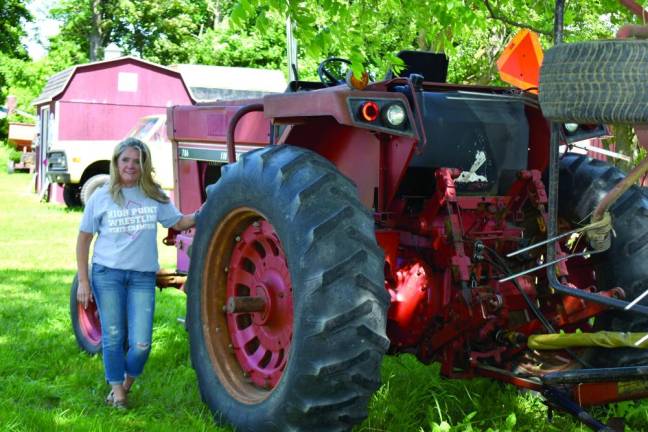
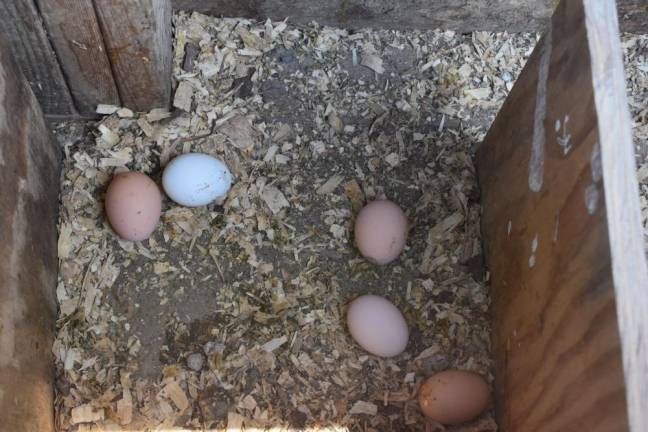
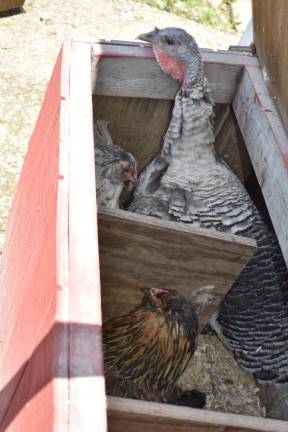
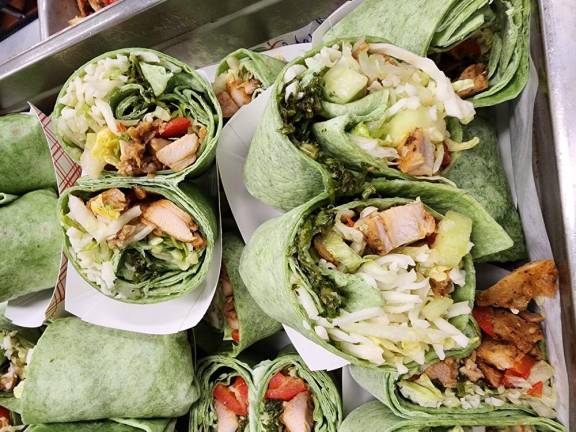
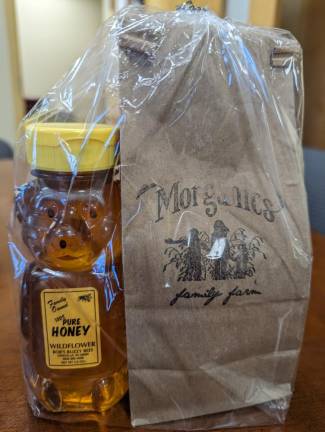
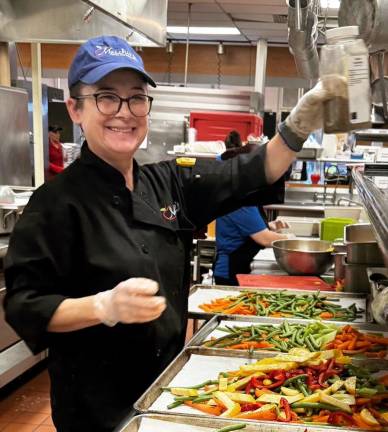
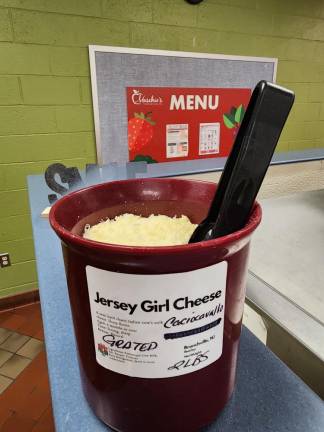
The burgers (pictured above) served at Vernon High School’s cafeteria this school year came from a pastured steer raised down the road at the Farm at Windy Flats in Wantage, NJ. For the first time ever, the Vernon Township Board of Education bought ground beef from the fourth-generation farm, with the help of a $9,206 federal Local Food for Schools grant.
“We would love to see the amount that we provide to the schools increase. We’re very proud of the product we raise. It’s all grown right here on the farm. We feed the animals what we produce ourselves,” said Holly Sytsema, who with her husband and son raises about 250 pastured head of cattle for dairy and meat. A few school districts bought Windy Flats ground beef this year – a versatile ingredient that can be used for meatloaf, tacos or a topping on just about anything, and is never out of season.
“I think it’s a very big deal for the students to consume high-quality protein instead of what they get off factory farms,” said Sytsema, who’s also president of the NJ State Board of Agriculture.
Getting local food into a public school system’s meal program seems like a home run. Supporting small farmers while reducing the carbon footprint that comes with long-distance shipping. Feeding kids fresh, nutrient-rich food while teaching them about where their food comes from. What’s not to like? Yet the reality of getting local food into school districts has proven to be a bear, with Big Food’s heat-and-serve model colonizing the school cafeteria for the last half century.
This past school year, though, it finally happened. Thanks largely to a $200 million infusion from the U.S. Department of Agriculture, local food made its way onto school menus nationwide – not replacing Big Food by any stretch of the imagination, but making more than a cameo. New Jersey was awarded nearly $5 million; New York, nearly $12 million; and Pennsylvania, nearly $7 million, to subsidize local food purchases from March 2023 through February 2025. The USDA defined “local” as in-state or within a 400-mile radius of the school.
The Local Food for Schools incentive was part of a package enacted in the wake of Covid to help schools deal with supply chain disruptions. “We recognize that local could be more expensive, so we wanted to get them to start looking at that,” said Nicole Broadwater, farm to school coordinator for the New Jersey Department of Agriculture. “Because when Covid happened and we couldn’t get shipments, they were like well, why aren’t we getting more local?”
So to help small farmers compete on price with Big Food, the USDA subsidized school purchases of unprocessed or minimally processed food from local farms, with extra dollars available for schools that used historically underserved farmers. The money could even be used to buy produce from a school’s own garden.
Building bridges between farmers and schools and puzzle-piecing the logistic together took time and doing. But once begun, “a lot of the relationships bud, and end up kind of working into the behavioral patterns of the school year. Especially younger students, they want to know more about their environment,” said Michael Baldwin, farm to school coordinator at Maschio’s Food Services, a food management company used by schools in New Jersey and Pennsylvania. “When you get to know these farmers, these are legacy farms. They love taking in more family.”
Sytsema, for instance, visited the Vernon cafeteria to talk to the food service workers who would be cooking the beef her family raised. “They asked about our farm, where we were located, how many animals we had, what they eat. A lot of them didn’t even know that,” she said, adding that she’d love to get into a classroom. “I think there’s definitely a lack of connection between where food is sourced and where it’s grown.”
Surprise money ‘sort of in our laps’
School administrators and farmers – both of whom tend to be diligent planners – were surprised to learn that this new, one-time pot of money was “sort of in our laps,” said Mike Ryder, superintendent of Hardyston Township Schools in Sussex County, NJ. “We were told by our cafeteria vendor and business office that we had a certain amount of federal funds that we were allowed to use – and encouraged to use – to purchase food from local sources,” said Ryder, whose district received $1,980 this past school year. It wasn’t “a ton of money,” said Ryder, and it was long spent by the time we spoke in early May.
“It goes pretty fast, but I think one of the things we could potentially take away from this is, even on a small scale, to establish relationships, and then potentially educate students on where this food comes from and what it takes to get from the earth to your table,” he said. “It just sparked a conversation, and it really wasn’t anything we did to make it happen. But now that we had a small taste of it – literally, we want to, I think, figure out a way to expand upon this.”
In addition to grated cheese from Jersey Girl Cheese in Branchville, NJ, the Hardyston district was interested in buying beef from Windy Flats, but ran into red tape. “We had to certify cooking temperatures in our kitchen and we couldn’t do it,” said Ryder. Instead, they got creative, packaging local oats and honey into 150 take-home bags for middle schoolers. The bags were one of the prizes during a 12-week challenge to improve academic achievement and community involvement, and decrease misbehaviors and absenteeism.
A big deal for small farms
Schools have tremendous purchasing power, and a shift to regional focus has the potential to buoy the local food economy at a critical moment for small farms, which are disappearing fast.
“Not all schools cook, but the ones that do have been buying, like, gargantuan amounts of food,” said Beth Feehan, a longtime advocate of farm-to-school and a salesperson at Zone 7, a New Jersey-based food hub that aggregates farm produce to deliver to institutional buyers. “More and more schools have the kitchen and the staff to deal with scratch cooking,” she added.
The honey bears and oats in those take-home bags, for instance, came through Zone 7. The oats, from Morganics Family Farm in Somerset County, NJ, were a popular item at a handful of school districts this year, ending up in breakfast oatmeal and muffins. “For a person like Scott to be selling, you know, six 25-pound bags, 150 to 200 pounds of oatmeal at a clip, commercial size, is an incredible game-changer,” said Feehan. “One, because he doesn’t have to deal with all the small packaging for retail and, two, he’s moving a lot of product.”
“We’re trying to grow grains, which is something that’s really been forced into the commodity/world marketplace, right?” said farmer Scott Morgan, who not only grows but also mills his own oats. “I wanted to feed people, and so I took it upon myself to do all of the milling and processing and marketing, so that I could break that commodity chain.” Morgan has begun expanding his operation, processing oats for neighboring organic growers as well. “So having this extra sales channel come through is definitely impactful for my business, and I think it’s hugely impactful for the schools that are taking advantage of it,” he said. “Kids need real food. We need kids knowing that real food tastes good.”
The honey bears in the take-home bags were from Bob’s Buzzy Bees, a third-generation apiary headquartered in Buck’s County, Pa. Daniel Burk, grandson of founder Bob Hughes, helps out taking care of the family’s 100 or so hives, and works full-time as firefighter. He hadn’t known the family’s honey was getting into schools, and was pleased to hear it when reached by phone. What he does know is that business is good. “We’re just as busy if not busier than ever,” said Burk. “I think eventually, it would be something I’d like to do full-time,” said Burk, of the apiary his grandfather founded in 1983. “I’m not in a position to rely on honey to pay the bills quite yet. It’s a lot of risk,” he said.
It goes without saying that farming is inherently risky, but having a steady buyer the size of a school district has the potential to take some of the pressure off.
Partnering with food hubs
When schools discovered they had money to spend with local farmers, not always the easiest of people to get in touch with, the phone started ringing at Zone 7. Going through a food hub allows schools to source locally without having to track down farmers or concern themselves with shortages of specific products. And it allows farms that would otherwise be far too small to supply institutional buyers to sell to restaurants, retailers and increasingly, schools.
Schools this year bought “unheard of” amounts of local produce, said Feehan. She ticks off popular cafeteria orders: “a lot of chicken wings,” lettuces, seedless cucumbers, frozen corn, frozen green beans, sweet potatoes, frozen spinach, crushed tomatoes, strawberries, asparagus and “boatloads of apples.”
Easy to transport and serve, apples are known in the industry as the gateway to local food. “They’ve cleaned us out of all our apple supply,” said Feehan.
It also falls to the food hub to “gently educate” school food service directors accustomed to ordering whatever they want, any time of year. “They’re asking for bananas and oranges,” said Feehan. “It’s a really different way than most institutional food is bought.”
A mad rush to find ‘underserved’ farmers
All of a sudden the phone started ringing at Munsee Three Sisters Farm in Newton, NJ this year. Additional USDA dollars are available for schools that use historically underserved producers, and as a member of the Turtle Clan of the Ramapough Lunaape Nation, farmer Michaeline Mann is on that short list. “There’s a lot of money that’s available, and now there’s a mad rush to find social equity farmers, for more than we can even grow,” said Mann, who with her husband farms 14 acres in Newton, NJ since 2019 and runs a CBD shop nearby. “It’s a wonderful program, but to be able to supply everybody when the money comes around,” she said, “it would have been nice to have some forewarning.”
Mann got her “foot in the door” with the Newton schools in February, providing 20 dozen eggs or so from her mixed flock of about 120 birds. “They definitely are interested in buying some of our produce,” she said. “I guess they are waiting for us to reach out to them,” but it’ll be awhile until the plants they’re growing from seed are ready to harvest, she said.
Then came a call from a food pantry interested in buying vegetables. The calls were appreciated, and Mann would love to say yes to these types of requests. Who wouldn’t? She began farming primarily to feed and provide medicine for her tribe, whose Mahwah home is a Superfund site where they can neither hunt nor farm. Still, “we would love to be able to distribute organic food at very low cost to all of our people in our community,” she said. But there are so many obstacles, from weasels beheading her chickens to the cost of seed and machinery to increasingly erratic weather conditions that decimated her tomato crop last year.
“We’re a mom and pop farm, so we’re already working on a skeleton crew and we don’t make a whole bunch of money,” she said. “If you’re going to go after social equity farming, 9 times out of 10 they’re not going to have a large farm,” and may not be able to meet increased demand when earmarked money comes around.
All small farmers, she added, face the same issues she does. Regardless of race or gender, all her neighbors working the dirt need and deserve the extra help that now accompanies minority status, Mann said. “I do believe that any small farmer is a social equity farmer,” she said. “Either you’re a big conglomerate or you’re a small farmer. Either you’re rich or you’re not. Either you’re making it or you’re not.”
What happens next?
The question now is whether states will build on the momentum from Local Food for Schools if and when the federal money dries up. “We ask every time we have a call with the USDA,” said Broadwater, of the NJ Department of Agriculture. “It was just from Covid money, so as far as we know it was just a one-time thing. That’s the big question: is this going to continue? What happens after?”Over a dozen states already have permanent statewide incentive programs, said Cassandra Bull, a policy specialist at the nonprofit National Farm to School Network. More are “on the horizon,” including in Pennsylvania and New Jersey, she said.
New York is six years into its local incentive program, though only seven percent of school districts statewide participated during the 2022-23 school year, and none in Orange County. Schools that spend 30 percent of their food budgets on local foods get reimbursed at a higher rate — 25 cents per meal versus the baseline of 19 cents per meal. The flaw in the program, said Bull, is that if a district doesn’t make the 30 percent cutoff, or can’t prove it did, it doesn’t get the additional funding, “which in my research has been a barrier for schools that can’t take the financial risk,” she said.
But even in the worst-case scenario, if schools don’t end up getting this kind of government subsidy again, it doesn’t necessarily mean local food is off the menu. “What we have seen is that once schools have exhausted funding, they do continue those relationships,” said Bull. “The connections are being made now, and schools will be familiarized with local food.”
School districts themselves can decide to prioritize buying close to home, said Ryder, the Hardyston superintendent. “We’d just have to budget for ourselves, and I’d like to. I mean one way or another, whether it’s grant funded or locally funded, I’d like to continue, because I think it’s a win-win for students and the community.”